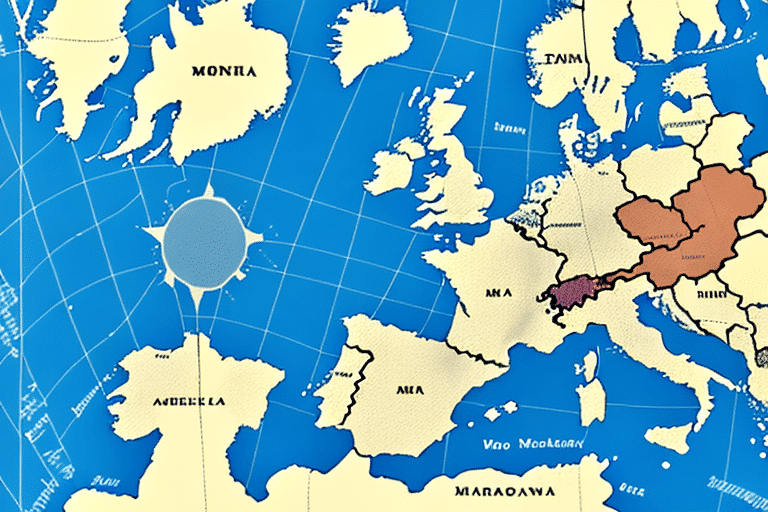Why Expand Your Ecommerce Business to Europe
Expanding your ecommerce business to Europe presents a significant opportunity for growth. With a population of over 740 million people, Europe offers a vast and diverse market for online retailers. The ecommerce market in Europe is expanding rapidly, expected to surpass €717 billion by 2023 according to Statista. Additionally, European consumers generally have a high disposable income, making them more willing to spend online. Diversifying into multiple European markets can also reduce the risk associated with relying on a single region.
Market Research and Understanding European Markets
Researching European Markets
The foundation of successful expansion is thorough market research. Analyze various market segments and consumer behaviors in your target countries. Key factors to consider include:
- Product Demand: Identify which products are in high demand.
- Pricing Strategies: Understand the competitive pricing landscape.
- Competition: Assess the level of competition in each market.
- Language and Cultural Differences: Tailor your offerings to align with local preferences.
- Legal Regulations: Comply with local ecommerce laws and standards.
Utilize European Commission’s economic data and reports from reputable consulting firms to gather insights.
Understanding Cultural Differences
Europe is not a monolith; each country has its unique cultural nuances that influence consumer behavior. For instance, Western European customers may prioritize quality, while Eastern European consumers might focus on affordability. Recognizing these differences can inform your product development, marketing strategies, and customer service approaches.
Marketing Strategies for the European Market
Adapting Marketing Strategies
Effective marketing in Europe requires adaptation to local preferences and regulations. Strategies should include:
- Search Engine Optimization (SEO): Optimize your website for local search engines like Google in different languages.
- Paid Advertising: Use region-specific platforms and adhere to local advertising regulations.
- Email Marketing: Personalize email campaigns to resonate with different cultural groups.
Be aware that advertising regulations and consumer protection laws can vary significantly across European countries. Refer to the European Data Protection Regulation (GDPR) for guidelines.
Leveraging Social Media
Social media is a powerful tool for building brand awareness and engaging with European consumers. Each country may prefer different platforms; for example, Instagram and Facebook are popular in Western Europe, while VKontakte is widely used in Eastern Europe. Conduct market research to identify where your target audience is most active.
- Build Brand Awareness: Share content that resonates with local audiences.
- Generate Leads: Use targeted ads to attract potential customers.
- Engage Audiences: Interact with followers through comments and messages.
Integrate social media with your ecommerce site by enabling social logins, sharing options, and showcasing social proof through reviews and testimonials.
Payment, Shipping, and Logistics
Choosing Payment Options
European consumers have diverse payment preferences. Offering a variety of payment methods can enhance customer satisfaction and increase conversion rates. Popular options include:
- Credit and Debit Cards
- PayPal
- Klarna
- Sofort
- SEPA Direct Debit
Verify compliance with EU VAT regulations to ensure legal compliance.
Choosing Shipping Options and Logistics Partners
Efficient and reliable shipping is crucial for customer satisfaction. Consider the following when selecting shipping options:
- Delivery Speed: Offer various shipping speeds to meet customer needs.
- Reliability: Partner with trusted logistics providers.
- Tracking: Provide order tracking to enhance transparency.
Evaluate logistics partners based on their international shipping experience, delivery capacity, and ability to offer tracking information. Implementing a distribution center within Europe can also optimize shipping times and costs.
Navigating Taxes and Duties
Complying with EU VAT laws is essential when selling to European customers. Utilize the VAT MOSS system to simplify VAT reporting across multiple EU countries. Additionally, maintain accurate invoicing documentation to ensure compliance and avoid legal issues.
Building Trust and Customer Support
Creating a Multilingual Website
A multilingual website enhances accessibility and demonstrates commitment to local markets. Ensure that your website allows users to easily switch between languages and that translations are accurate and culturally appropriate.
- Translate product descriptions and customer service content.
- Localize content to reflect regional dialects and preferences.
Overcoming Language Barriers
Offering multilingual customer support can significantly improve the customer experience. Provide support in customers' preferred languages through various channels such as live chat, email, and phone.
- Hire local staff fluent in target languages.
- Use translation services for support documentation.
Building Trust with Customers and Partners
Trust is a cornerstone of successful ecommerce in Europe. To build trust:
- Quality Assurance: Ensure high standards for your products.
- Timely Delivery: Meet or exceed delivery expectations.
- After-Sales Support: Provide robust support for returns, refunds, and customer inquiries.
- Loyalty Programs: Implement rewards to encourage repeat business.
Legal and Regulatory Considerations
Data Protection and GDPR
Compliance with the GDPR is mandatory for handling customer data in Europe. Ensure your data collection, storage, and processing practices adhere to these regulations to protect customer privacy and avoid hefty fines.
Consumer Protection Laws
Each European country has its own consumer protection laws that govern ecommerce transactions. Key areas include:
- Return and Refund Policies
- Warranties and Guarantees
- Transparent Pricing
Consult with legal experts familiar with the ecommerce laws in your target markets to ensure full compliance.
Measuring Success and Learning from Case Studies
KPIs and Metrics
To gauge the success of your expansion, monitor key performance indicators (KPIs) aligned with your business goals:
- Conversion Rates: Measure the percentage of visitors who make a purchase.
- Traffic Statistics: Analyze the number and source of website visits.
- Website Analytics: Track user behavior on your site.
- Social Media Engagement: Monitor likes, shares, comments, and follower growth.
- Customer Reviews: Assess feedback and ratings from customers.
Regularly reviewing these metrics allows you to make informed decisions and adjust strategies as needed.
Case Studies of Successful Ecommerce Businesses
Learning from successful ecommerce companies can provide valuable insights. Notable examples include:
- Zara: Successfully localized their product offerings and marketing strategies across Europe.
- ASOS: Implemented robust multilingual support and diverse payment options tailored to European markets.
- H&M: Adapted their logistics and supply chain to meet the demands of various European countries.
These companies demonstrate the importance of localization, customer-centric approaches, and strategic logistics in successful European expansion.
Conclusion
Expanding your ecommerce business to Europe can be both challenging and rewarding. Success requires meticulous planning, comprehensive market research, cultural understanding, legal compliance, effective localization, efficient logistics, and strategic marketing. By following these guidelines and continuously monitoring your performance through relevant KPIs, your ecommerce business can establish a strong presence in the European market and unlock new growth opportunities.






















